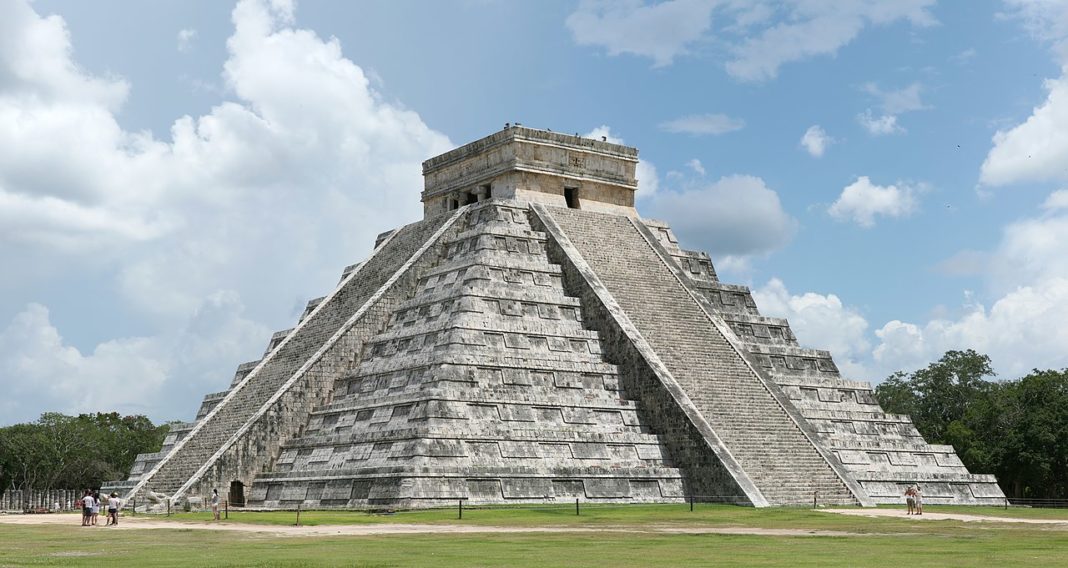Chichen Itza was a large pre-Columbian city built by the Maya people of the Terminal Classic period. The archeological site is located in Tinúm Municipality, Yucatán State, Mexico.
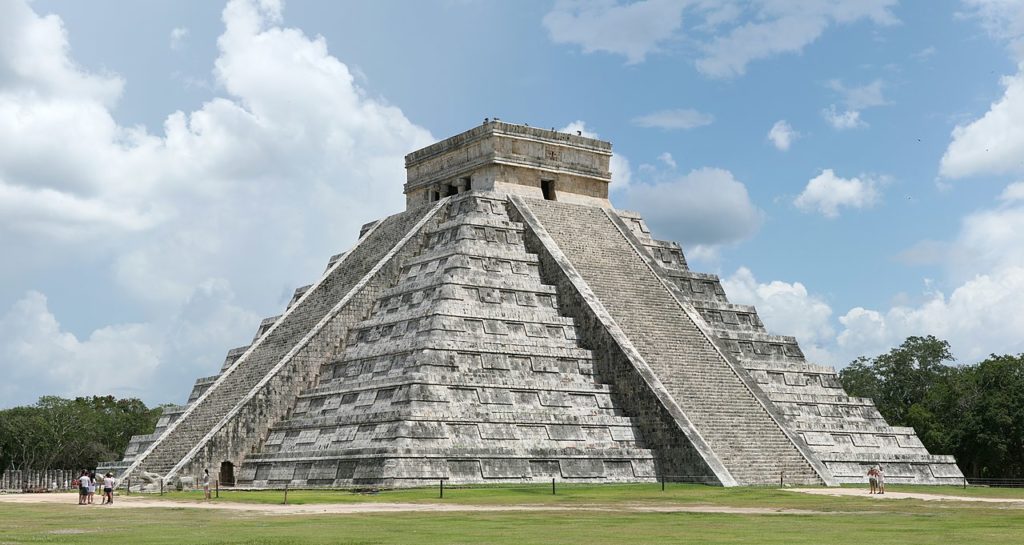
Chichén was founded about the 6th century CE, presumably by Maya peoples of the Yucatán Peninsula who had occupied the region since the Pre-Classic, or Formative, Period (1500 BCE–300 CE). The principal early buildings are in an architectural style known as Puuc, which shows a number of divergences from the styles of the southern lowlands.
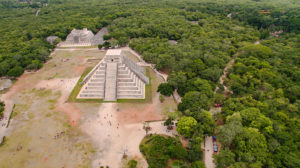
The site exhibits a multitude of architectural styles, reminiscent of styles seen in central Mexico and of the Puuc and Chenes styles of the Northern Maya lowlands. The presence of central Mexican styles was once thought to have been representative of direct migration or even conquest from central Mexico, but most contemporary interpretations view the presence of these non-Maya styles more as the result of cultural diffusion.
Chichen Itza was one of the largest Maya cities and it was likely to have been one of the mythical great cities, or Tollans, referred to in later Mesoamerican literature. The city may have had the most diverse population in the Maya world, a factor that could have contributed to the variety of architectural styles at the site.
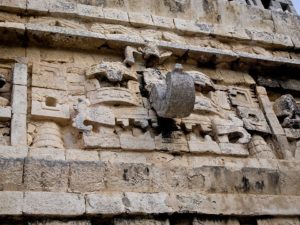
About 1450 the League and the political supremacy of Mayapán dissolved. When the Spanish entered the country in the 16th century, the Maya were living in many small towns, but the major cities, including Chichén, were largely abandoned.
Long left to the jungle, Chichén Itzá remained sacred to the Maya. Excavation began in the 19th century, and the site became one of Mexico’s prime archaeological zones.
A legendary tradition at Chichén was the Cult of the Cenote, involving human sacrifice to the rain god, Chaac, in which victims were thrown into the city’s major cenote (at the northernmost part of the ruin), along with gold and jade ornaments and other valuables. In 1904 Edward Herbert Thompson, an American who had bought the entire site, began dredging the cenote; his discovery of skeletons and sacrificial objects confirmed the legend.
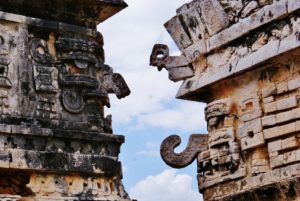
The ruins of Chichen Itza are federal property, and the site’s stewardship is maintained by Mexico’s Instituto Nacional de Antropología e Historia (National Institute of Anthropology and History). The land under the monuments had been privately owned until 29 March 2010, when it was purchased by the state of Yucatán.
Chichen Itza is one of the most visited archeological sites in Mexico with over 2.6 million tourists in 2017.
According to Wikipedia/ britannica





